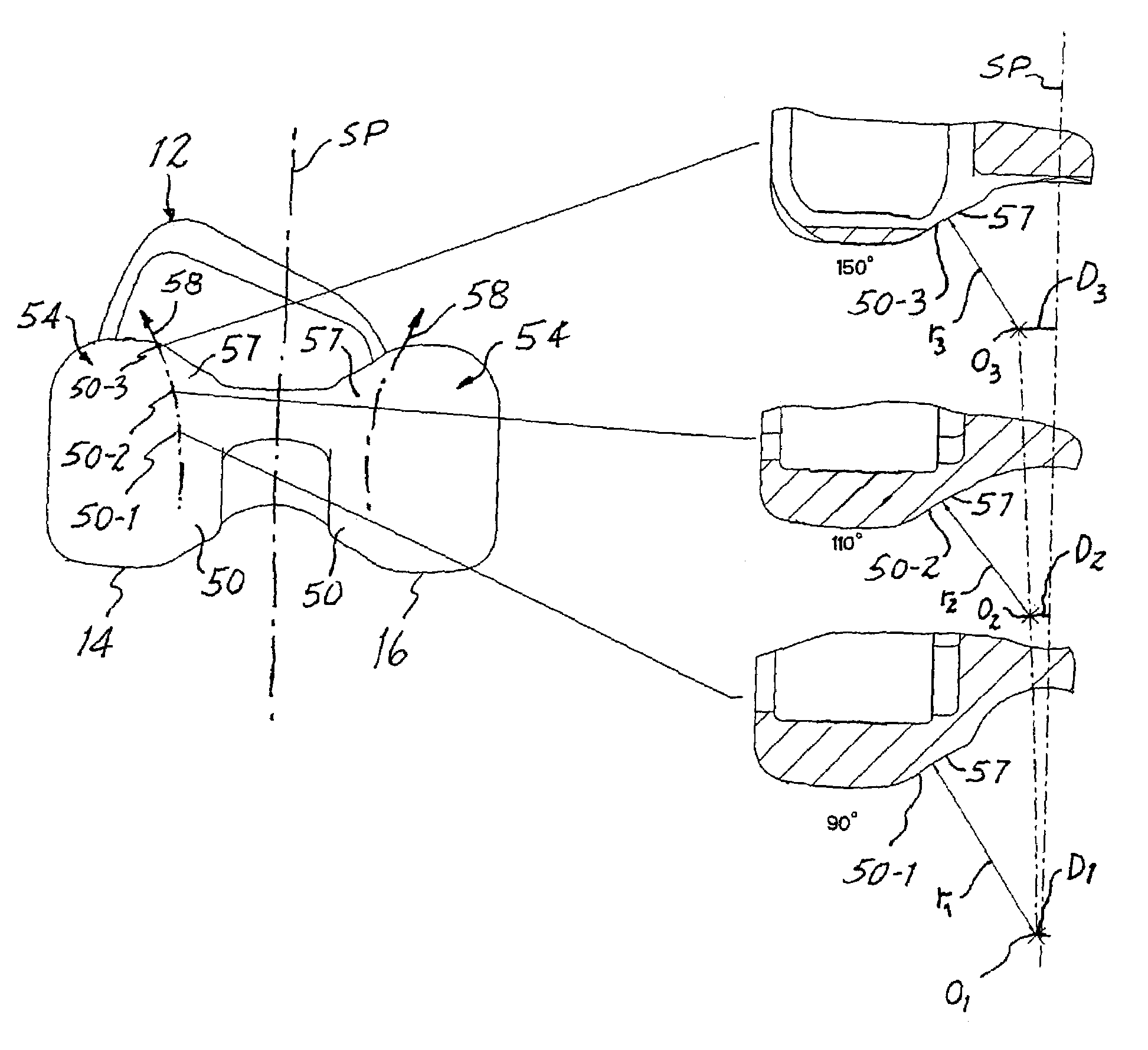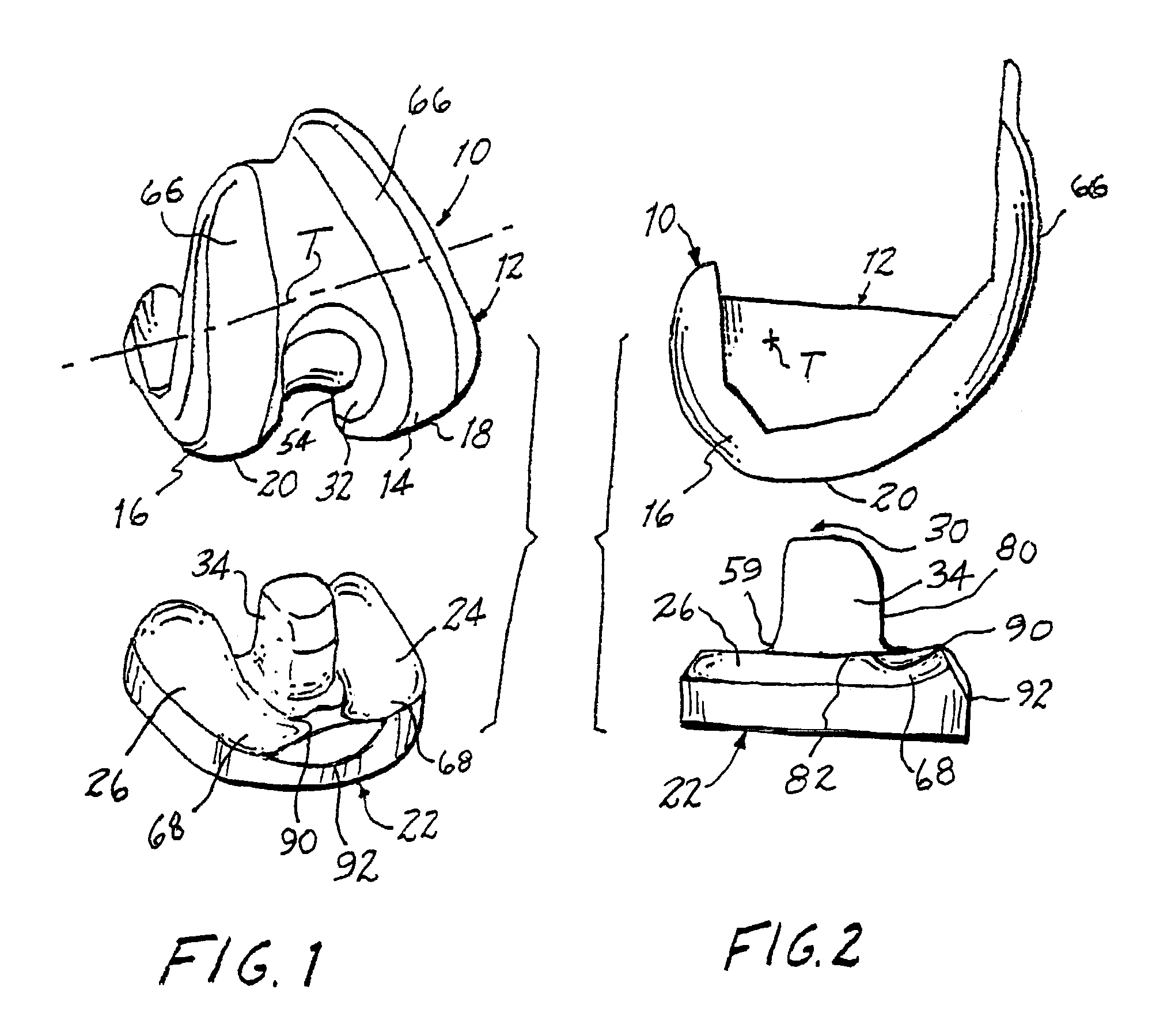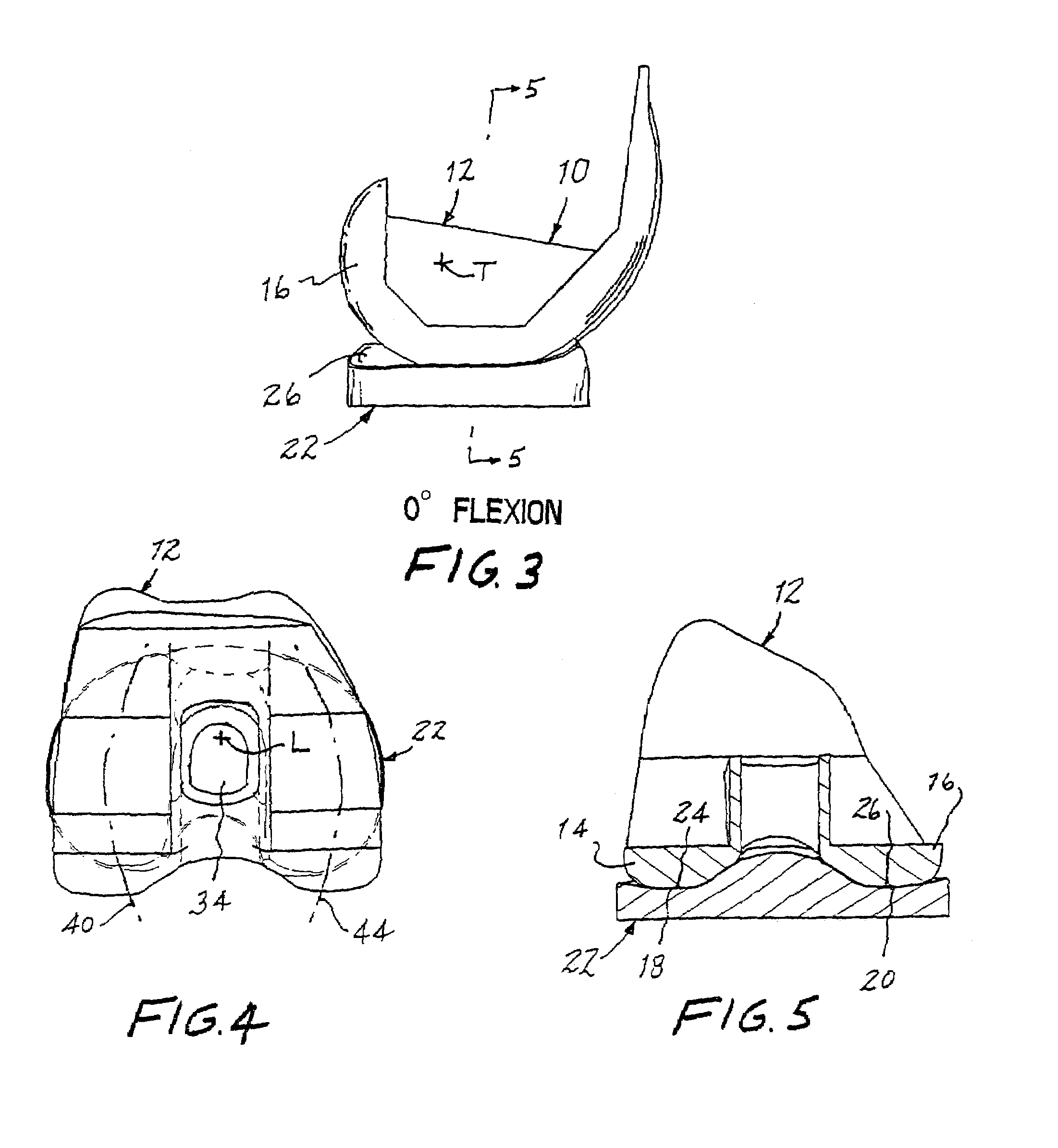Knee prosthesis with extended range of motion
a knee joint and extended range technology, applied in the field of knee joint replacement with knee prosthesis, can solve the problems of excessive wear of the tibial component, the knee is distracted, and the knee is not able to accurately rotate about the longitudinal axis, so as to achieve increased hypertension, wide range of motion, and increased hypertension
- Summary
- Abstract
- Description
- Claims
- Application Information
AI Technical Summary
Benefits of technology
Problems solved by technology
Method used
Image
Examples
Embodiment Construction
[0030]Referring now to the drawing, and especially to FIGS. 1 and 2 thereof, a knee prosthesis constructed in accordance with the present invention is shown at 10 and is seen to comprise a femoral component 12 having condylar elements illustrated in the form of condyles including a lateral condyle 14 and a medial condyle 16. Each condyle 14 and 16 includes a condylar surface 18 and 20, respectively. A tibial component 22 has articular surfaces including a lateral articular surface 24 for engagement with lateral condylar surface 18 of lateral condyle 14, and a medial articular surface 26 for engagement with medial condylar surface 20 of medial condyle 16, for rotation about a transverse axis of rotation T.
[0031]In the total knee replacement provided by knee prosthesis 10, both the anterior and the posterior cruciate ligaments are sacrificed, and knee prosthesis 10 includes a stabilizing mechanism 30 for stabilizing the engagement between the lateral condyle 14 and the lateral articul...
PUM
 Login to View More
Login to View More Abstract
Description
Claims
Application Information
 Login to View More
Login to View More - R&D
- Intellectual Property
- Life Sciences
- Materials
- Tech Scout
- Unparalleled Data Quality
- Higher Quality Content
- 60% Fewer Hallucinations
Browse by: Latest US Patents, China's latest patents, Technical Efficacy Thesaurus, Application Domain, Technology Topic, Popular Technical Reports.
© 2025 PatSnap. All rights reserved.Legal|Privacy policy|Modern Slavery Act Transparency Statement|Sitemap|About US| Contact US: help@patsnap.com



